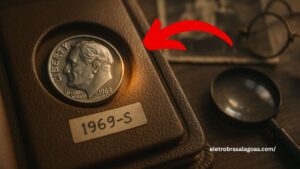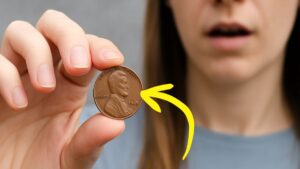Imagine casually sorting through your pocket change and discovering a rare Lincoln Wheat Penny worth $21 million.
Sound unbelievable? Yet collectors are buzzing: rare minting errors—like the 1943 copper penny—have fetched jaw-dropping prices and may still be hidden in circulation.
The Fascinating History of the Lincoln Wheat Penny
The Lincoln Wheat Penny, minted from 1909 to 1958, was the first U.S. coin to feature a real person—Abraham Lincoln, designed by Victor David Brenner. The classic reverse design with wheat stalks earned it the nickname “wheat penny.” Worlds of value lie in its subtle variations and mint mistakes.
What Makes the $21 Million One So Special?
During World War II (1943), pennies were supposed to be zinc–plated steel due to copper shortages. However, a handful—possibly 40 total—were mistakenly struck in copper.
One identified 1943‑D copper penny sold in 2010 for $1.7 million, and rumors suggest a private 1943 copper coin sold recently for $21 million .
Table of Notable Wheat Penny Errors
| Year | Type / Error | Approx. Circulation Estimate | Record Value | Key Identifier |
|---|---|---|---|---|
| 1943 | Copper (off-metal) | ~40 known | $21 million (rumored) | Copper color, not magnetic |
| 1944 | Steel planchet leftover | Few | ~$373,750 | Steel weight, magnetic |
| 1955 | Double-Die Obverse | ~20,000–40,000 | Up to $150,000 | Clear doubling on date and inscription |
| 1909‑S VDB | Key-date collectible | 484,000 | ~$100,000 | “VDB” initials on reverse, mint mark “S” |
How to Spot These Treasures
- Check the Year – Look for 1943, 1955, and 1944.
- Inspect Mint Marks – Letters like D or S under the year can signal rarity.
- Look for Errors – Erroneous color (copper vs steel), doubling, missing mint marks.
- Use Tools – A magnifying glass, magnets (steel vs copper), and scale help identify anomalies.
Are These Rare Pennies Still in Circulation?
Yes! Experts confirm that rare variants occasionally turn up in everyday pocket change, bank rolls, or old collections—even now. Many collectors dig through coins found in vending machines or coin jars in hopes of striking gold.
What Each Find Means for You
- Life-changing treasure: Discovering a 1943 copper penny could mean a multi-million dollar windfall.
- Valuable but smaller finds: A 1955 double‑die could net $100k–150k; a 1909‑S VDB may also fetch ~$100k.
- Historical collector’s pride: Even small rarities are thrilling additions to any collection.
What to Do If You Find One
- Do not clean—cleaning can severely reduce value.
- Take it to a certified dealer or submit to grading services like PCGS or NGC.
- Authenticate and grade—a certified coin sells for significantly more.
A humble Lincoln Wheat Penny could be your golden ticket—literally worth millions. With a keen eye, basic tools, and a bit of patience, anyone can scour their change for numismatic gold.
The next time you flip a penny, think: you might be holding a piece of history—and maybe even a fortune.
FAQ
Could a $21 million penny really be in ordinary change?
Yes—it’s rare but possible. A few 1943 copper pennies may still circulate undetected.
How to tell if my penny is an error?
Look for unusual metal color, mint mark, and doubling. Use a magnet, magnifier, and scale to test authenticity.
What do I do if I find one?
Don’t clean it. Instead, have it professionally authenticated and graded to ensure maximum value.




